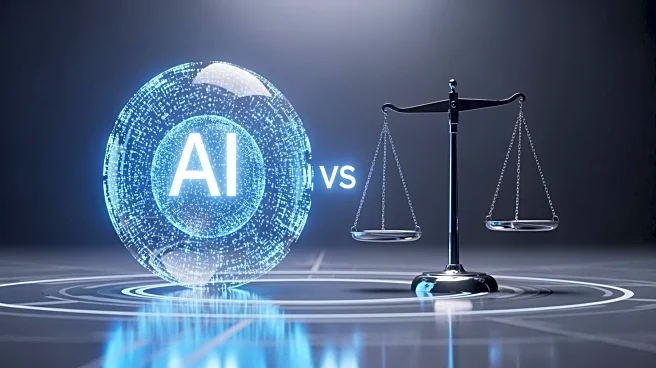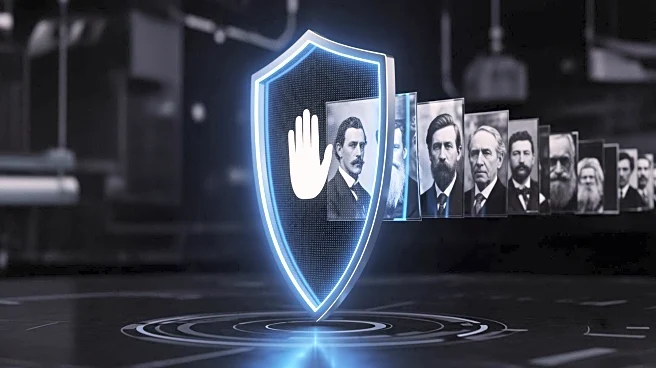What's Happening?
OpenAI's release of the AI video-generation app, Sora, has brought attention to the growing threat of deepfakes. Sora allows users to create videos featuring themselves and others through a feature called 'cameos.' Despite OpenAI's efforts to ensure user control
over their likeness, Reality Defender, a company specializing in identifying deepfakes, was able to bypass Sora's anti-impersonation safeguards within 24 hours. This incident underscores the challenges in regulating and securing deepfake technology. The Take It Down Act, signed into law in May 2025, aims to address these issues by prohibiting the online publication of non-consensual intimate visual depictions. However, enforcement of this law will not begin until May 2026. The rapid advancement of deepfake technology and the lag in regulatory measures leave individuals vulnerable to potential fraud and harassment.
Why It's Important?
The increasing accessibility and realism of deepfakes pose significant challenges to privacy, security, and trust in digital media. As deepfake technology becomes more sophisticated, it becomes harder to distinguish between real and fake content, raising concerns about misinformation and identity theft. The legal and technical complexities of regulating deepfakes are evident, as seen in the recent striking down of a California deepfake law due to First Amendment concerns. This situation highlights the need for effective regulatory frameworks that balance free speech rights with the protection of individuals' privacy and security. The development of authentication technologies and know-your-customer schemes are potential solutions, but they also raise concerns about privacy and anonymity.
What's Next?
As the enforcement of the Take It Down Act approaches, there is a need for continued dialogue and collaboration between lawmakers, technology companies, and civil society to develop effective strategies for managing deepfakes. The focus will likely be on enhancing authentication technologies and implementing regulations that require labeling of AI-generated content. Additionally, there may be increased pressure on platforms like Sora to improve their security measures and user verification processes. The ongoing evolution of deepfake technology will require adaptive regulatory approaches to ensure that individuals are protected from misuse while maintaining the balance of free expression.
Beyond the Headlines
The deepfake phenomenon raises broader ethical and cultural questions about the nature of reality and trust in the digital age. As deepfakes become more prevalent, society must grapple with the implications for personal identity and the authenticity of digital interactions. The potential for deepfakes to be used in political manipulation, fraud, and harassment highlights the need for public awareness and education on the responsible use of technology. Building resilience to fake media will be crucial in maintaining trust in digital communications and preventing the erosion of social cohesion.













